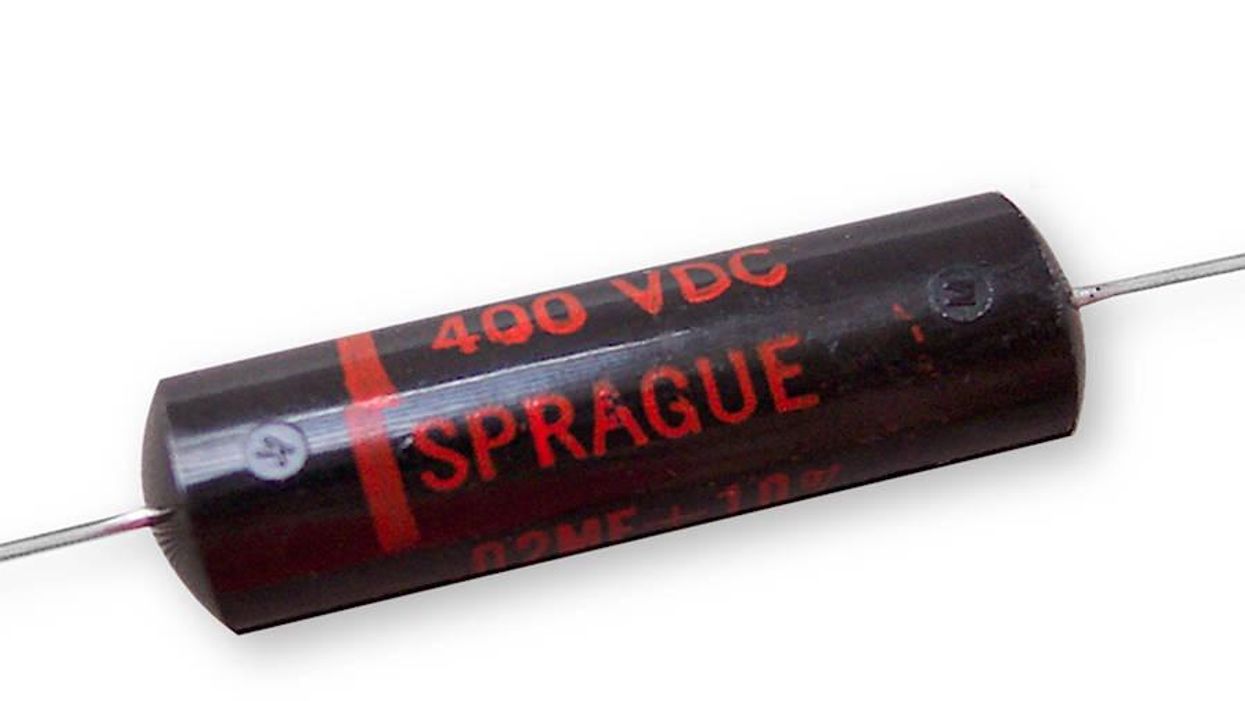Let's look at the different tone caps to make it easier for you to make the right choice. Knowing the correct value makes the process even easier and less expensive, because you can buy one cap of each type to try them out. Imagine buying all available caps in all values – the time and money saved is worth spending some time with our cardboard chart!
There are no hard and fast rules as to what cap to use – there are no good or bad ones. "Good" is what you like; if super-cheap, 2-cent mini ceramic caps sound good to your ears, there is no problem with that. I've seen some odd things inside guitars over the years, so experiment. One general rule to follow, however, is to use standard, non-polarized film and foil caps. Polarized electrolytic caps don't sound very good as a tone cap.
Some tone caps seem to be more common than others, so I've prepared a guide to these. Most of the information is based on my experiences or advice from customers. If you have any special questions about tone caps, feel free to contact me.
Sprague "Black Beauties"
These, together with the "Bumblebee" caps, are definitely the most discussed caps, with an almost magical touch to them. They are usually from the late fifties or early sixties and can be found in a lot of guitars from that era. They are famous for their use in '58 and '59 (Burst) Les Pauls, and some say that they are responsible for the magical tone of those guitars. The Black Beauties can be found with red and yellow print, and the 400 and 600 volt types are the ones most often found inside guitars from that time.
These caps tend to dampen some high-end, making the tone softer, smoother, warmer or sweeter. The bass frequencies are also smoothed out, providing familiar sounds from recordings of that era. These caps are for those looking for the old vintage Les Paul tone, and they can be found at NOS or used on eBay. The only replicas I know of are from LUXE, but keep in mind that these replicas will sound different, like newer bumblebee caps. If you want to use the vintage caps, make sure that you use vintage cloth wire inside your guitar and the Gibson fifties vintage wiring, otherwise you will not fully experience the tones from these caps.
"Bumblebee" caps
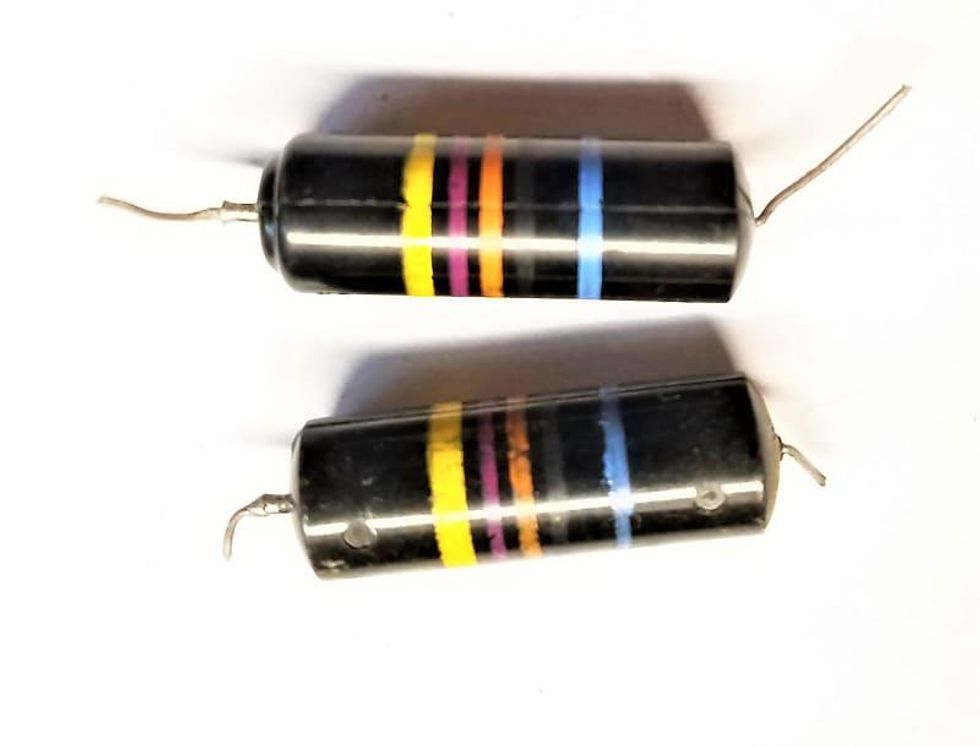
The bumblebee caps are very similar to the Black Beauties, and the origin of the nickname is pretty easy to see. You can also find these caps inside late-fifties Les Pauls and other guitars from that era, and they are definitely the most famous tone caps. Everything written about Black Beauties applies equally to bumblebee caps. Replicas are available from LUXE, Crazy Parts, and singlecoil.com.
One thing to be aware of is the Gibson "replicas" from their Historic series. These caps only look like bumblebees; I x-rayed and also opened some of them, and inside there is a cheap, standard film cap, masked with a Bumblebee cover.
"Tropical Fish" caps
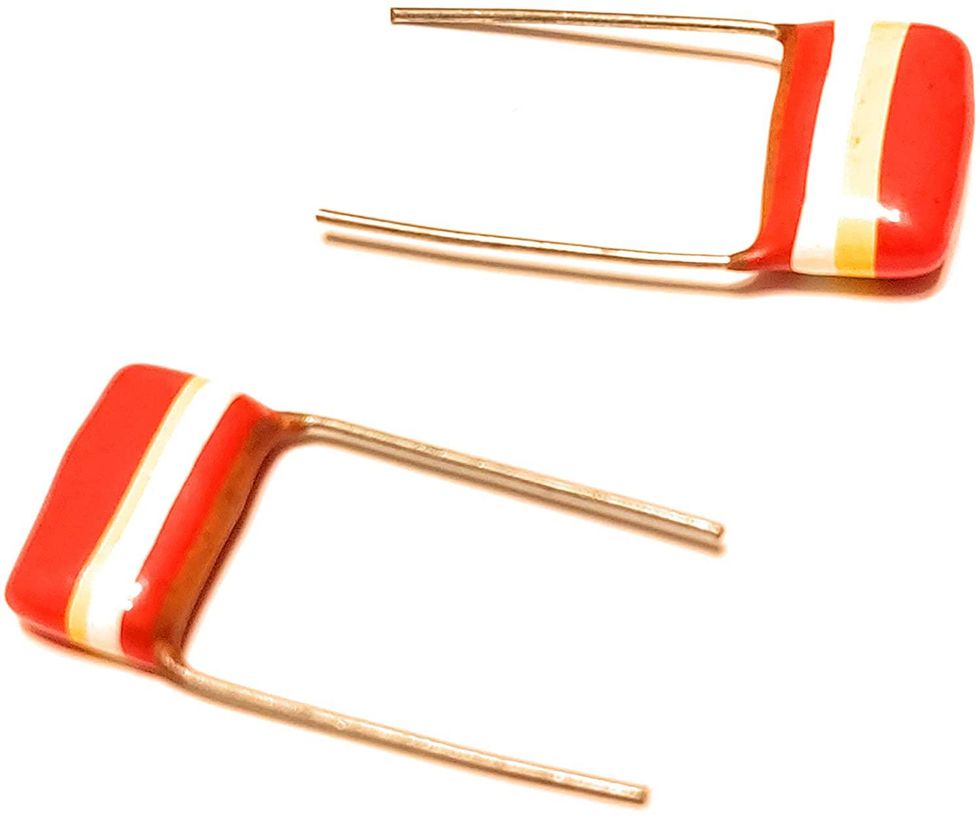
These caps are called "tropical fish" because of the colored stripes that look a bit like a tropical fish. The "tropical fish" are often mixed up with the "bumblebee" caps, but this is simply wrong. You can find the tropical fish caps mostly inside old vintage stompboxes, wah pedals and amps, but they can also be found inside some guitars. I really like these as tone caps because they offer a very fat tone, without turning the tone into mud. These caps are no longer in production, so you can find them on eBay or from vintage parts dealers. R.G. Keen from Visual Sound investigated these caps and found that they are standard film caps that are just painted funny -- very similar to the cheap "Greenies" from Xicon, so give them a try.
"Flat Disc" (ceramic) caps
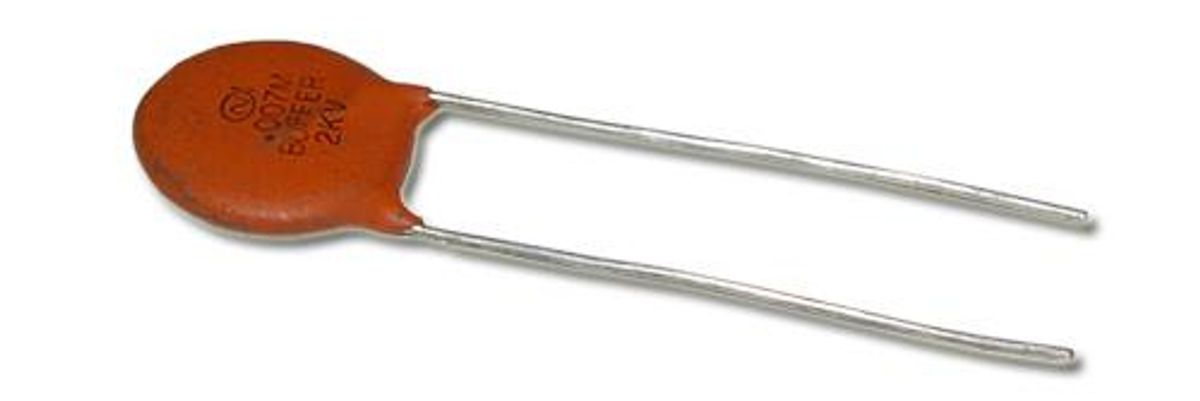
These are the old "high voltage" ceramic disk caps from Sprague or Erie that are found in almost every vintage Fender guitar. You can also find them inside old stompboxes and amps. They sound very different from modern ceramic caps and add a special flavor to the tone. If you are looking for a typical sixties vintage Fender tone, you should try these caps. From time to time, you can find originals on eBay, and replicas are available from LUXE. Another option is to get some consumer electronic devices from this era, like old TVs, radios, etc., and cannibalize from there. Often you can find them for free!
Sprague "Orange Drop" caps
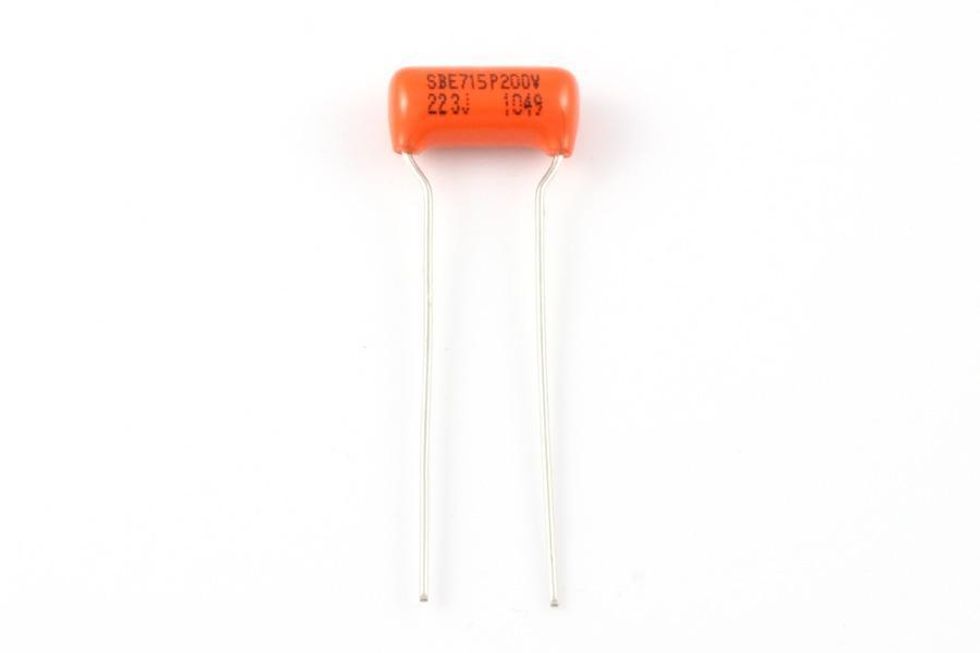
These caps are still available today from Sprague/Vishay and can be found in some high-quality guitars from PRS or Gibson. You can find old Sprague Orange Drops in a lot of old Fender guitars. The higher voltage values can also be found inside high-quality amps today, as well as in a lot of vintage Fender amps. This is another tone cap that I really like; it's very transparent and tends to pronounce the mid frequencies a bit. A lot of our customers choose these caps for Fender guitars of all kinds. Old ones are available on eBay and new ones are available in almost every local electronic store. Don't skip trying these caps!
Mallory caps
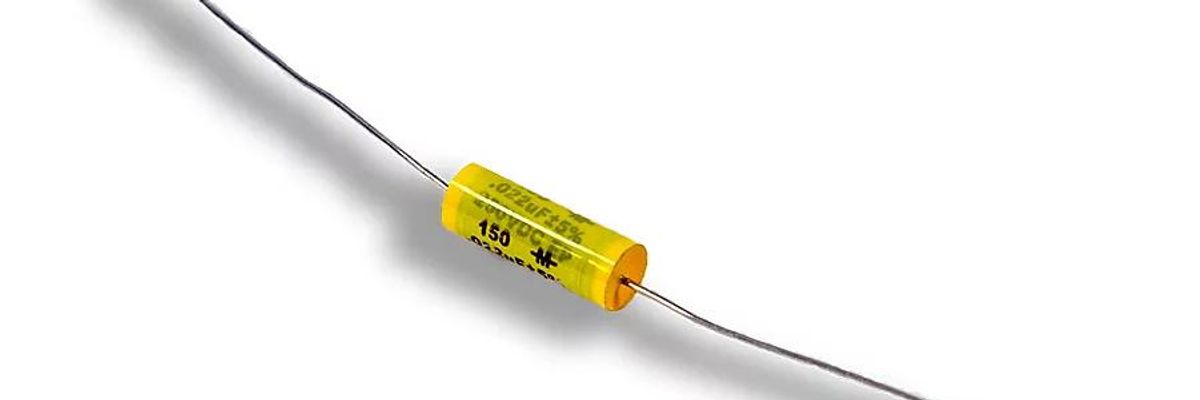
Mallory caps have a tubular shape and yellow color. You can find these caps in a lot of amps, and also inside guitars as tone caps. These caps have a great fat and punchy sound, pronouncing the mid frequencies while keeping the treble alive. This is the ideal tone cap for rock guys, and a lot of our customers choose them for their Les Pauls and SGs. They also sound great inside Fender guitars, and Leo Fender put these caps inside all of his "Music Man" amps, manufactured exclusively for him by the Plessi company. This is a good overall tone cap, and a great place to start; it seems to work well with both humbuckers and single coils. You can buy these caps new from a lot of companies.
Silver Mica caps
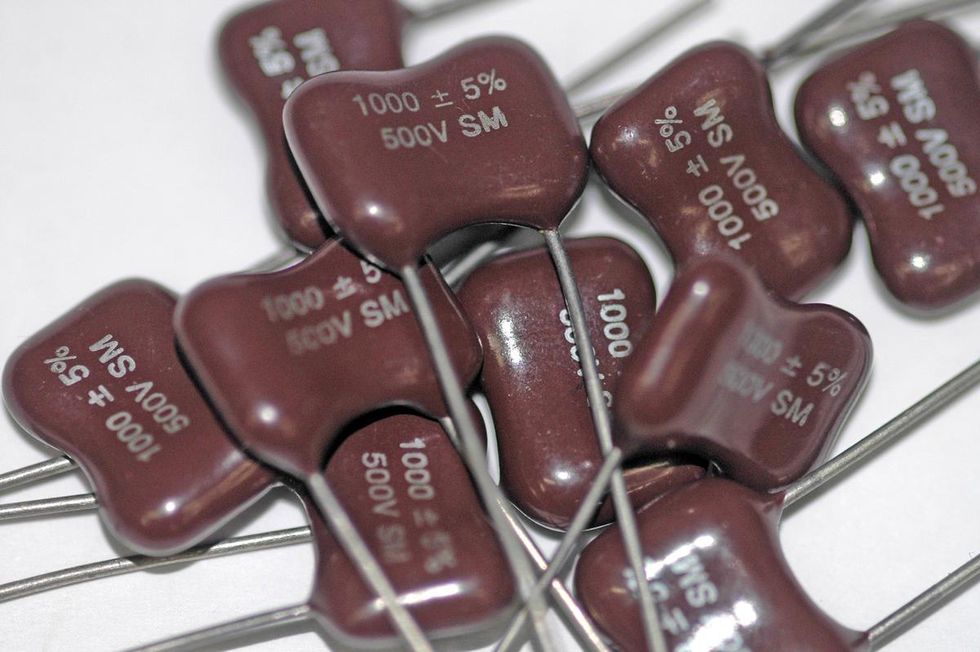
These caps have a typical "hump" in the middle of the body and can be found inside high-quality amps and stompboxes. They can also used as a hi-cut cap on the volume pot and, if you can find the correct value, also as a cap for the tone control. Higher values are often hard to find, large and very expensive, but still worth a try. They really sound excellent, without any coloration of the tone.
Styroflex caps
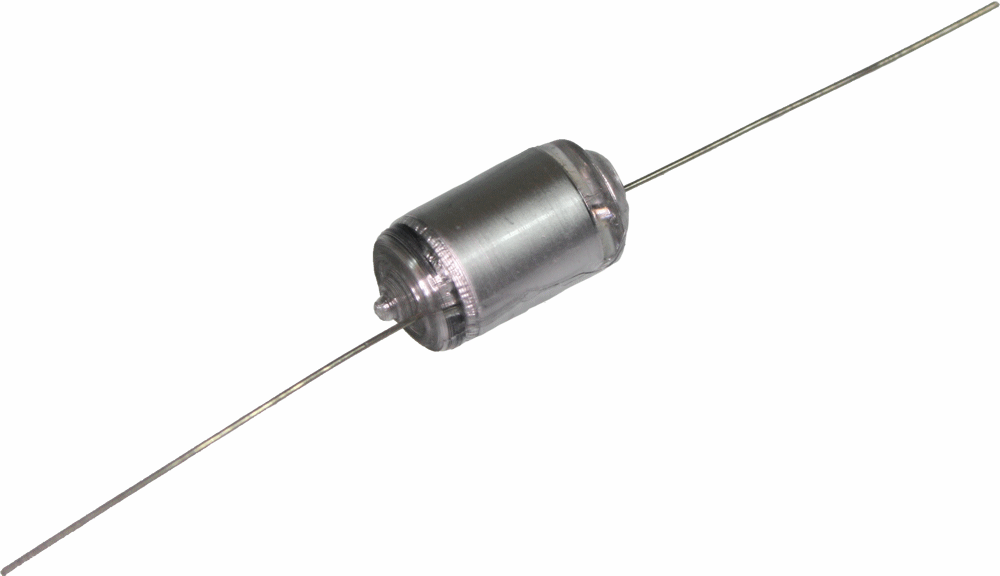
Styroflex caps are easy to identify because of their tubular shape and transparent housing. These caps are typical caps from the fifties and you can find them inside almost every radio and TV from the era. Some companies still make them today, and they're one of my favorite tone caps for maximum transparency of tone with absolutely no coloration. I prefer Styroflex caps inside semi-acoustic guitars and jazz boxes. You can find them on eBay, usually as assorted sets of different values, but they are also available from some companies out of actual production runs.
Oil-Paper caps
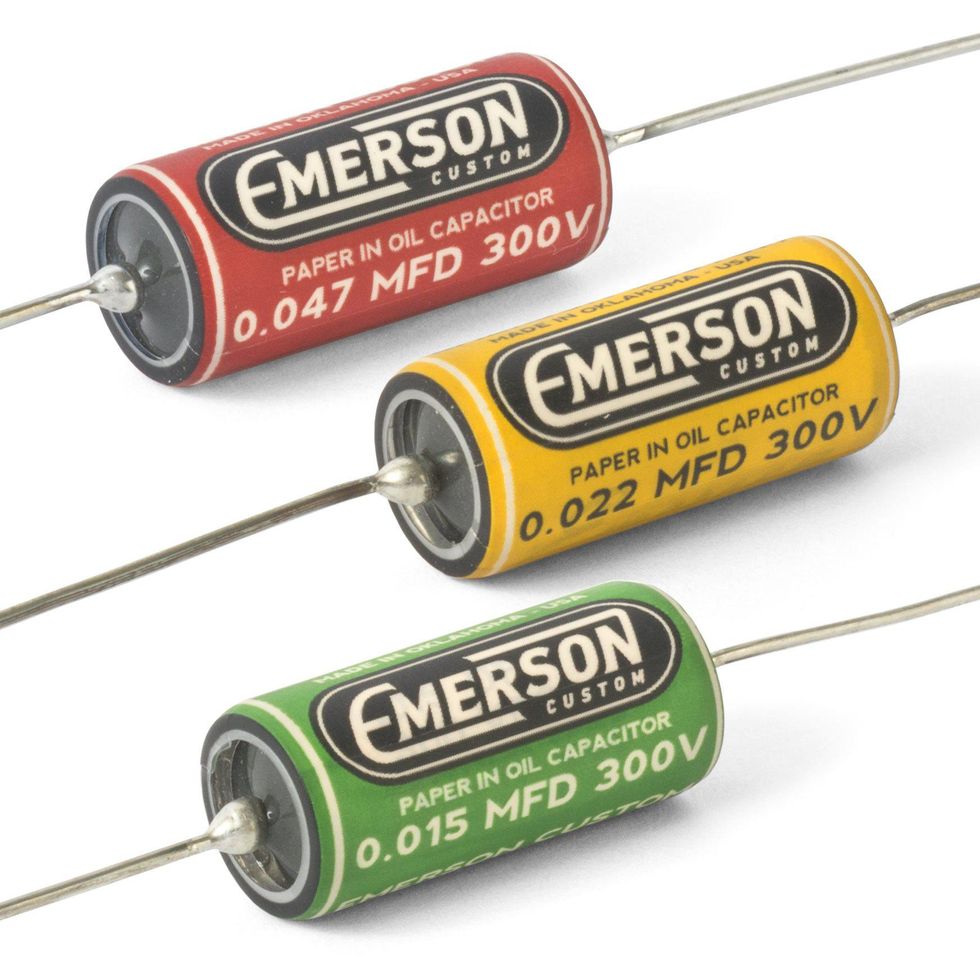
These caps from companies like Jensen can be found in high-end HIFI gear, as well as in high-quality guitar amps. They are very expensive but a lot of players swear by them. You can use them inside guitars if you have enough space for them; I tried them a while ago, and they sounded very similar to the Silver Mica and Styroflex caps -- definitely not a bad reference.
There are a lot more caps out there, like the Vitamin Q, Mustard caps and many others, however I think this is a good overview to help you choose which ones to try. Caps sound very different from one another, and they really affect the overall tone of the guitar – even with the tone pot fully opened. Remember, there is no right or wrong, it is simply a matter of individual taste. Don't be afraid to try cheap or historically incorrect caps with "incorrect" values; I never use the factory stock values, as I find them to be way too much. I prefer values from 3300 up to 6800pF, which makes the tone control much more useable. You can also mix up different types and values in one guitar; I have a Strat with a 6800pF Mallory cap for the bridge pickup only and a 3300pF Mallory cap for the middle and neck pickups together. Feel free to experiment and let your ears decide!
Next month we will get back to doing some guitar mods, this time discussing the wiring inside your axes.
[Updated 11/23/21]
